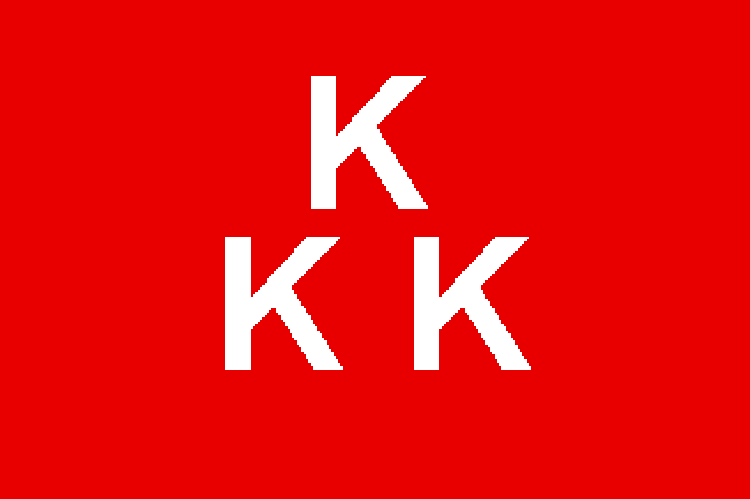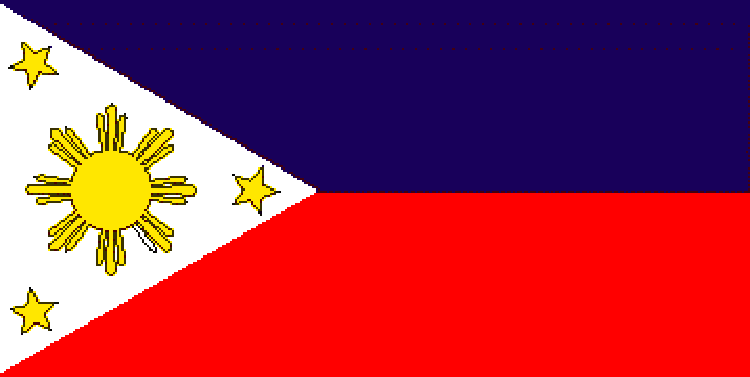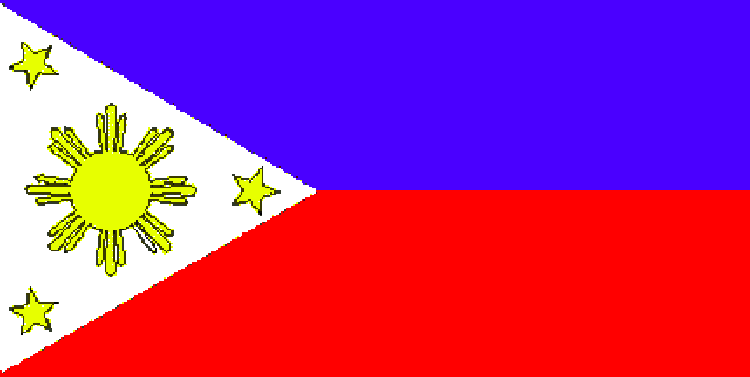PHILIPPINE FLAG – History Of The Creation Of The Flag
PHILIPPINE FLAG – In this topic, we will now discuss about the history of the creation and changes of the national Philippine flag.
This is based on an article by the Manuel L. Quezon III, the descendant of the 2nd President Manuel L Quezon.
The trace to search for its roots is surrounded by controversies and reliable sources. We will first begin in the Philippine Revolution, led by a movement called the Kataastaasang Kagalanggalangan Katipunan ng mga Anak Ng Bayan or Katipunan for short.
Their flag is commonly described as three Ks in a red field, where the red symbolizes the blood of where the members sign their oaths to be inducted in the society. There are two versions: One where the Ks are in a single line, and the other where the Ks from a triangle.


Before they declared independent, in May 28, 1898, Marcela Marino de Agoncillo, Lorenza Agoncillo, and Delfina Herbosa de Natividad sew the first ever Philippine flag and was flown in battle. It was at June 12, 1898, now known as the Philippine Independence day, that the flag was unfurled by the first president Emilio Aguinaldo.

The flag adapted the mythical sun with a face with eight rays representing the 8 provinces who revolted against the Spaniards: Manila, Cavite, Bulacan, Pampanga, Nueva Ecija, Bataan, Laguna and Batangas; the white triangle of masonry; the three stars; and the red and blue stripes, wherein if red is above the blue, it signifies war. The red and blue, according to history, is the same colors from the Cuban flag.
In 1919 onwards, according to historians, the cloths containing the colors of the American flag was available in most stores. Thus, the flag adapted the colors of navy blue and red, with the design

On March 25, 1936, Manuel L. Quezon issued Executive Order No. 23 which states that:
- Article XIII of the then-Constitution “prescribes what the Philippine National Flag should be without giving descriptions and specifications”;
- Act. 2928 described “the construction of the Philippine Flag without the necessary specifications of the different elements of the flag”;
- “[C]ompliance with this Act has not been uniformly carried out and has caused the making of Filipino flags in disproportionate sizes with different allegorical symbols of the flag.

The changes in the flag are as follows:
- The mythical sun was replaced by a standard sun and 8 rays
- The colors are still American navy blue and red
- The angle of the stars and the white triangle is codified.
- The ratio of the flag changed to 2:1
In February 12, 1998, Republic Act 8491 was approved and changed the blue stripe of the flag from navy blue to royal blue, thus this is the flag that we use today.

The RA states that:
SECTION 4. The flag of the Philippines shall be blue, white and red with an eight-rayed golden-yellow sun and three five-pointed stars, as consecrated and honored by the people.
SECTION 26. The period from May 28 to June 12 of each year is declared as Flag Days, during which period all offices, agencies and instrumentalities of government, business establishments, institutions of learning and private homes are enjoined to display the flag.
SECTION 27. The flag shall have the following proportions. The width of the flag, 1; the length of the flag, 2; and the sides of the white triangle, 1.
SECTION 28. The technical specifications shall be as follows: The blue color shall bear Cable No. 80173; the white color, Cable No. 80001; the red color, Cable No. 80108; and the golden yellow, Cable No. 80068.
READ ALSO: PHILIPPINE FOLK DANCES – List Of Filipino Dances
